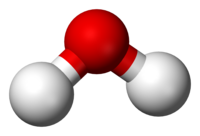SriKumar wrote:Problem 1:
Mom. Iner_solid_Sphere = (2/5)*M*r^2; M.I._hollow_Sphere = (2/3)*m*r^2.
Applied Torque = Force x radius
Force seeking to rotate the sphere = mass*g*cos(theta) where theta is the angle of inclination.
Forcce equilibium equation in rotational system= Torque = I* alpha (where alpha = omega/t).
For solid sphere: M*g*cos(theta) = (2/5)* M*r^2/2 *alpha; alpha = 2.5*g*cos(theta)/r^2
For hollow sphere: m*g*cos(theta) = (2/3) m*r^2 * alpha; alpha = 1.5 g*cos(theta)/r^2
The solid sphere should reach the bottom faster because it has a higher acceleration (if both start from rest).
Problem 2: I am assuming a sliding mass (i.e. no car, no wheels, no friction, no rolling anything...just two masses sliding down an inclined plane).
They should reach at the same time because force equilibrium eqn is: mass*g*cos(theta) = mass* acc.
Mass cancels out; so acceleration for both is the same (and both start from rest).
PRoblem 3:
No idea why they move, I did check my cereal box for ingredients, and it contains some metals- a lot of Fe, some Zn, Cu, Mg..... Which might be ferro (or dia) magnetic. Just remembered that water is diamagnetic....need to think this one out (there's the irregular shape of the cereal, surface tension of water and the force exerted by magnet on the water...)
Problem 4:
Pure guess here....tap water has all sorts of charged ions and they are being affected by the statically-charged comb. I have no idea whether the charge in the comb is positive or negative (which would actually tell us the nature of the charged ions in the tap water).
one thing to ponder here is that if there is a hollow sphere and solid sphere ,both with the same mass m why does the hollow sphere have greater moment of inertia...
